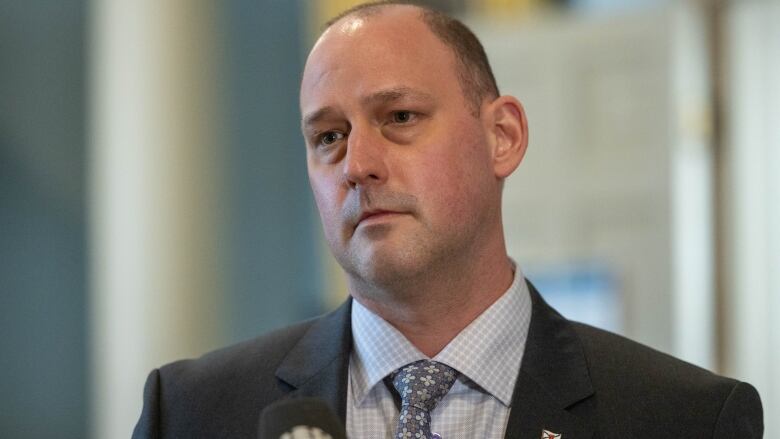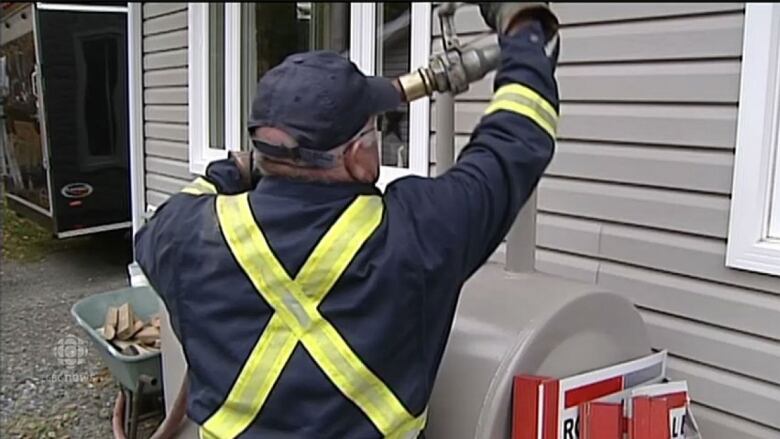Does Nova Scotia's new plan to address climate change go far enough?
The 40-page plan outlines commitments, not just a vision, says environmental expert

This week, the Nova Scotia government released a new 40-page climate change plan with 68 actions aimed at cutting greenhouse gas emissions and reaching the province'sclimate goals.
Among the 68 measures, one item aims to modernize the environmental assessment process; another pledges to reduce greenhouse gas emissions from electricity by 90 per cent by 2035;and to reduce home heating oil use by at least 20 per cent by 2030.It's all part ofmeeting the province'slegislatedgoal ofnet-zero greenhouse gasemissions by 2050.
To get an analysis of the government's planto fight climate change, CBC's Information Morning Halifax spoke to Peter Duinker, professor emeritus at Dalhousie University's school of resource and environmental studies.
This interview has been edited for length and clarity. Listen to the full interview here:
What do you think of this plan in general?
I have positive and less than positive reactions. I do like certain elements of the document, and I'm going to call it a document rather than a plan because I don't think it's really a plan. But the things I like about it are that it's broad and diverse, there's something for everybody in it, and it covers a lot of bases. Technical specialists of one sort or another will look for some action items that we think really tie into who we are and what we do. And I found a couple of those. There are trees in the plan and that makes me happy.
An upgrading of the environmental assessment process is in action item 62 and that also makes me happy. The document is optimistic. It has a very warm tone and it's kind of interesting that it makes the point over and over again, maybe in an oblique way, that if we respond well to climate change, it's good for both the economy and the environment. And that's got to be good news. Finally on the plus side, I like the tone of commitment and so the government is saying 'we are committed to doing this and that.' Some of those commitments are rather vague, but at least they're commitments.

So what is missing?
It feels like it's part way toward a plan. The reason I say that is it identifies the things that are important to government. It identifies the things the government thinks it ought to do.But, as has been pointed outalready in some criticisms of the document,there's little by way of anyone having a sense of what's expensive to do and what's cheap to do.
At the same time, there's no indication of what gets us a long way towardour goals and which action items get us a short way towardour goals. I think both of those thingsthe resource requirements to implement and the expected consequences must be laid out before we could call this a plan.
There's no ranking of the priorities that will get us closer to those 2030 and 2050 goals. But what's one that you thinkshould be near the top that you would like to see more detail around?
I haven't thought about that in any specific way, but one thing that I would suggest is missing from the overall discussion that needs to be, I think, front and centre, is how this plan might connect with the plan that the premier has expressed to have two million people living in this province by the year 2060. That would mean there would need to be 25,000 new Nova Scotians every year, if it were an even flow per year.
That means an inordinate amount of urban development to accommodate people:new facilities of all sorts, transportation, buildings, all the rest. The economy will certainly grow. But what does that mean with respect to trying to get to net zero? I think that presents a huge challenge that we need to reconcile.

You say we need to differentiate between the mitigation of climate change and adaptation to climate change. Why do you make that distinction?
Well, I make that distinctionbecause those two agendas are a little bit separable. So the mitigation agenda is one where we need to take responsibility for our emissions of greenhouse gases.
But we have to remember that greenhouse gases are more or less globally mixed and it means that a kilo of carbon dioxide going into the atmosphere in Nova Scotia is having the same effect on the climate as a kilo of carbon dioxide going into the atmosphere from, let's say, Indonesia.
Let's not imagine that if we did our part that climate change problems for us go away. They don't.- Peter Duinker
So there is the possibility that there's a false impression in the document that if we get our house in order with respect to carbon dioxide production, then climate change for us, goes away. Well, it does not go away. The entire globe has to make progress in getting to net zero before climate change will subside, particularly with respect to the rate at which it's changing.
So the adaptation agenda is fundamental to making life worth living in Nova Scotia. We have to pay, at least as much, maybe more attention to adaptation. Depending on your optimism around how rapidly the entire globe will be able to stem the flow of greenhouse gases through the atmosphere. So yes, we should do our part. But let's not imagine that if we did our part that climate change problems for us go away. They don't.

There is this section of the environmental assessment that you do like. Tell us a bit about item 62 when it comes to modernizing the process to consider climate change impacts.
Item 62 says modernize the process to consider climate change impacts. That's not generally done now, and we have to take into account that most of the development projects that we put in place will be in place for a long time. If we build a house or some new facility, that might be there for 50 or 100 years. If we build a new road, it will be there for a very long time and during that time the climate will be changing.
If we don't consider the possibility that climate change will make [an] impact ...then our environmental assessments are not worth the effort we put into them. So that's one thing.
The second itemis cumulative effects. Many of us in this business believe that the cumulative effects are indeed, more or less, the real effects that environmental components experience. If those aren't accounted for in environmental assessment, we really have a dangerously partial picture of what might happen to those environmental components when we go ahead with projects.












_(720p).jpg)


 OFFICIAL HD MUSIC VIDEO.jpg)
.jpg)



























































































